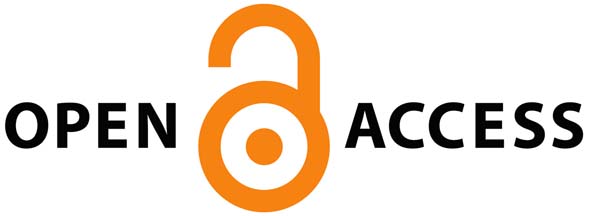| Comparison of the sternal wires and sternal cable in closure of the sternum during cardiac surgery | |
| DOI: 10.5606/e-cvsi.2014.296 | |
| Yücel Özen, Sabit Sarıkaya, Murat Bülent Rabuş, Deniz Günay, Eray Aksoy, Mehmet Dedemoğlu, Kaan Kırali | |
| Department of Cardiovascular Surgery, Kartal Koşuyolu Yüksek İhtisas Training and Research Hospital, İstanbul, Turkey | |
| Keywords: Cable; obesity; sternal dehiscence | |
Objectives: This study aims to compare the effectiveness of the sternal cable system (Cable group) with the standard monofilament
system (Wire group) in the sternal closure of cardiac surgery patients. Patients and methods: Between January 2014 and September 2014, a total of 56 patients were included. The patients were divided into two groups according to the closure modality. The Cable group in whom the sternal cables were used consisted 24 patients, whereas the Wire group included 32 patients. Risk factors such as obesity, chronic obstructive pulmonary disease, diabetes mellitus, reoperation and closure with figure-of-8 were considered in the selection of these patients. The length of intensive care unit and hospital stay, blood drainage, infection and sternal complications were compared between the groups. Results: Preoperative and perioperative variables between two groups were similar. There was no postoperative sternal complications for the Cable group, however, sternal dehiscence and superficial wound infections were observed in two patients in the Wire group. An inflammatory reaction to the wire developed within one month in a patient. Conclusion: We recommend using sternal cable system instead of wires in the patients having risk factors for sternal instability. |
|
Median sternotomy is the standard approach in open
heart surgery. It is also necessary to perform sternal
closure properly. Although this procedure is relatively
simple, sternal complications such as dehiscence, sternal
nonunion or infection may occur about 0.25-5%.[1,2]
The mortality rate is observed up to 25% in patients
with a deep sternal wound infection.[3,4] Furthermore,
higher costs for hospitalization are present due to
prolonged hospital stay. The predisposing factors which may cause such complications, namely chronic obstructive pulmonary disease (COPD), high body mass index, diabetes mellitus, older age and smoking are defined in several studies.[4] We assume that sternal dehiscence and infection ratios can be reduced by using a reliable closure technique. In this study, we compare the patients in whom we used a sternal cable and sternal wire in aspects of postoperative complications. |
|
The sternal cable system (Pioneer Surgical
Technology, Inc., Marquette, Michigan, USA) was
inserted in 24 patients during a six-month period.
The patients in whom we performed open heart
surgery by median sternotomy were divided into two groups. We also included the patients whose body
mass index was over 30 and sternum was closed
by figure-of-8 in both groups. The patients with a
sternal wire closure were selected retrospectively.
We compared postoperative drainage, the length
of intensive care unit (ICU) and hospitalization
stay, admission time, sternal infection and sternal
dehiscence ratio between two groups.
Surgical technique
Statistical analysis |
|
Demographic data of two groups are shown
in Table 1. There were no statistically significant
differences between preoperative variables. Surgical
interventions of the patient groups are shown in
Table 2. Table 1: Demographic data of the patients Three cables were used to maintain 8 figures. Hemi-sternums were converged with the use of equal pressure by closure device. Postoperative data of the Wire group and Cable group are presented in Table 3. The drainage amount of the Wire group was less than the Cable group (p=0.001). The hospitalization time was significantly shorter in the Cable group (p=0.004). Sternal dehiscence in three patients and sternal revision in five patients were observed in the Wire group, however, there was no statistically difference among two groups. The closure via cable was longer than the closure time with a wire. The right internal mammary artery was injured by the cable put through the intercostal space in one patient. In the Cable group, one patient in whom cardiovascular resuscitation was performed about 15 minutes had a ventricular fibrillation attack at early postoperative period. This patient was discharged without sternal dehiscence. |
|
Median sternotomy was first described by Minton[5]
in 1887 and still remains the most common surgical approach in cardiac surgery. The incidence of sternal
dehiscence was reported to be 0.5% to 8% depending
on the presence of a mechanical defect, and type
and degree of the infection.[6] In addition, several
techniques have been described for the sternal closure.
This study was conducted to investigate whether a
sternal cable could be an alternative to the sternal wire.
In this study, we compared the patients with sternal
closure via a cable by a single surgeon and those via a
wire by several surgeons. The selection of the patients
were utilized by the body mass index >30 and the use
of figure-of-8 in the sternal closure in both groups.
Urgent cases were excluded from the study. Although many materials have been used for the sternal closure so far, a sternal wire has been widely adopted currently. Grapow et al.[7] used a new material namely ZipFix, which had successful results. Permut et al.[8] performed the cable system in pediatric patients and reported that the ratio of postoperative pain and restlessness were relatively low in this patient population. The postoperative pain and painkiller use were relatively low in patients in the Cable group. Corset was not used in any patient. Superficial wound infection was observed in one patient, while dehiscence was not found in any patient. The length of hospital stay was significantly shorter in the Cable group. In conclusion, although there were no statistically significant difference between two groups, we conclude that sternal cable system can be used safely instead of standard sternal wire in patients whose body mass index are >30 and those with comorbidities. However, further large-scale studies are required to establish a conclusion.
Declaration of conflicting interests
Funding |
|
1) Ochsner JL, Mills NL, Woolverton WC. Disruption and
infection of the median sternotomy incision. J Cardiovasc
Surg (Torino) 1972;13:394-9.
2) Grmoljez PF, Barner HH, Willman VL, Kaiser GC.
Major complications of median sternotomy. Am J Surg
1975;130:679-81.
3) Baskett RJ, MacDougall CE, Ross DB. Is mediastinitis a
preventable complication? A 10-year review. Ann Thorac
Surg 1999;67:462-5.
4) Bryan AJ, Lamarra M, Angelini GD, West RR, Breckenridge IM. Median sternotomy wound dehiscence: a retrospective
case control study of risk factors and outcome. J R Coll Surg
Edinb 1992;37:305-8.
5) Murray KD, Pasque MK. Routine sternal closure using
six overlapping figure-of-8 wires. Ann Thorac Surg
1997;64:1852-4.
6) Rand RP, Cochran RP, Aziz S, Hofer BO, Allen MD,
Verrier ED, et al. Prospective trial of catheter irrigation and
muscle flaps for sternal wound infection. Ann Thorac Surg
1998;65:1046-9.
|
|














